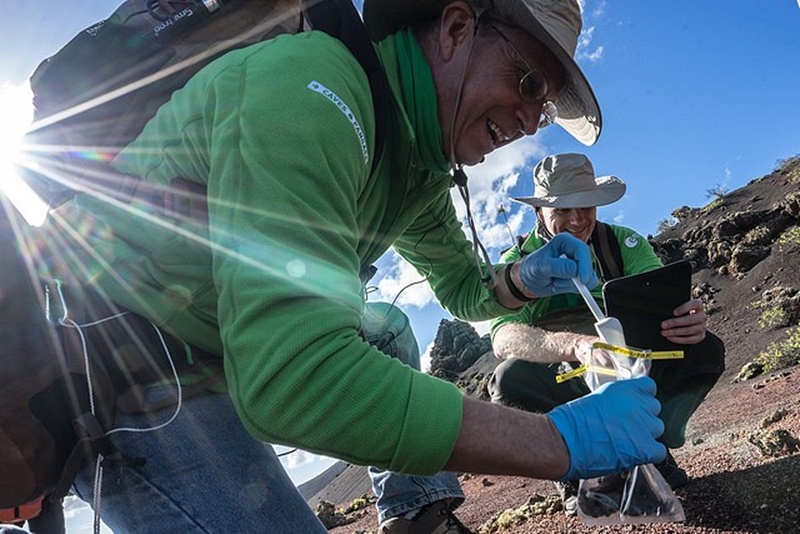Lanzarote, land of operations of future missions to Mars
Photographs: </ strong> ESA-Alessio Romeo
The landscapes of Lanzarote have always been compared with the potential geology that can be found on the Moon and Mars. Many automobile brands have crossed the winding curves of Timanfaya to simulate in their commercials extraterrestrial lands. These days, the volcanic plains of the island are being visited, not by big brands, but by a team of researchers specialized in the geology and planetary astrobiology of different European universities, and astronauts and specialized technicians of the European Space Agency (ESA) .
This group of specialists is evaluating the response capacity of the technology that will be used in the exploration of these celestial bodies Lanzarote can be compare with. The campaign combines space and geological exploration with advanced technologies in order to prepare humans to work in extra-planetary territory.
Similarities with the Red Planet
A degraded area of the municipality of Tinajo has been transformed, during these days, into a scenario that simulates the geological conditions of the Red Planet and the terrestrial satellite. The geological characteristics of the Earth’s crust have remained practically intact in that area, so astronauts can train new methods of collecting samples or study ways to improve existing ones.
As the robots move into unknown terrain, the astronauts analyze rocks and send detailed geological descriptions to the control of the mission. There, the researchers receive and analyze the samples collected in a process that, in the near future, will be repeated on the outer space terrain. “Our goal is to test tools and procedures in a real environment, with the instruments and communicative limitations that we would have in a mission. We are in Lanzarote to improve the efficiency of future expeditions to the Moon”, explains Loredana Bessone, project director.

Training for walking on the Moon includes new sampling tools and updated replicas of NASA systems used during Apollo missions. The ESA experts will work individually or in pairs, taking into account the mobility limitations of space suits and communication cuts. All with the aim of continuing to unveil some of the secrets that the terrestrial satellite hides.
The European Space Agency has chosen Lanzarote for the development of this program due to the unique geological characteristics of the island and to “almost Martian landscapes that constitute the perfect environment to recreate expeditions to the Moon and Mars”.

